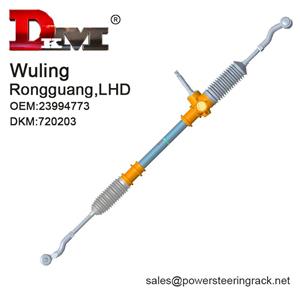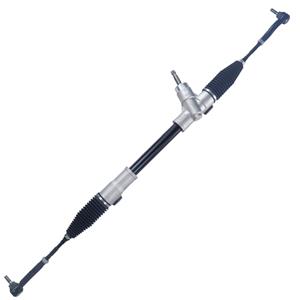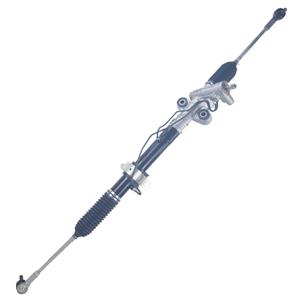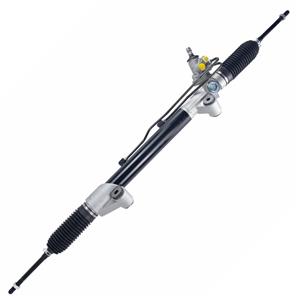Rack and Pinion Steering Vs. Power Steering: Are They the Same?
In the realm of automotive design and functionality, the steering system is a vital component. It directly impacts the driving experience, handling, and safety of the vehicle. Often, car enthusiasts and regular drivers come across two key terms: Rack and Pinion Steering and Power Steering. To most people, these two terms seem to be used interchangeably, but in reality, they represent different concepts and functions.
This article will delve into the definition, working principles, and differences between rack and pinion steering and power steering to answer the question, “Are they the same thing?”

What is Rack and Pinion Steering?
First, let’s understand what a rack and pinion steering system is and what role it plays in a vehicle’s steering system.
1. Definition and Basic Principles of Rack and Pinion Steering
Rack and pinion steering is a mechanical steering system that converts steering wheel rotation into steering angle of the wheels through the interaction of a rack and a pinion. In simple terms, when the driver turns the steering wheel, the gear on the steering wheel shaft drives the rack to move in a straight line, thereby changing the direction of the wheels.
2. Components of rack and pinion steering
The main components of the rack and pinion steering system include:
● Steering pinion (Pinion Gear): mounted on the steering shaft and meshing with the rack.
● Steering rack (Rack): a straight rod with teeth that meshes with the steering pinion. It is directly connected to the front wheel steering knuckle and controls the rotation of the wheel by turning the rack.
● Steering shaft: transmits the rotation of the steering wheel to the gear to start the steering process.
3. Advantages and limitations of rack and pinion steering
The main advantages of rack and pinion steering are simple structure, directness and fast response. Due to the mechanical connection of the system, the steering force can be transmitted to the wheel with minimal loss, so the steering controllability is better. However, the disadvantage of this system is that it requires greater steering force, especially when driving at low speed or when parking, which requires more physical effort from the driver.
What is Power Steering?
Compared with rack and pinion steering, power steering is a broader term that covers different types of auxiliary steering systems. The purpose of power steering is to reduce the operating burden of the driver and make the steering process easier.
1. Definition and Basic Principles of Power Steering
Power steering is a system that assists the driver in steering by using external force (usually hydraulic or electric). It makes steering easier by reducing the force applied by the driver, especially at low speeds or when parking.
2. Types of Power Steering
Power steering can be divided into the following main types:
● Hydraulic Power Steering (HPS): The most common power steering system, which provides steering assistance through a hydraulic pump. The hydraulic pump is usually driven by the engine and applies force to the steering rack through hydraulic oil to make steering easier.
● Electric Power Steering (EPS): Provides assistance through an electric motor, gradually replacing the traditional hydraulic system. Electric power steering systems are generally more efficient because they only provide assistance when needed, unlike hydraulic systems that are always running.
● Electro-Hydraulic Power Steering (EHPS): Combines the characteristics of both electric and hydraulic systems, using an electric motor to drive a hydraulic pump to provide steering assistance.
3. Advantages of power steering
The main advantage of power steering is that it reduces the driver's steering burden and improves driving comfort and convenience. Especially when driving at low speeds and parking, the driver can steer with almost no effort to turn the steering wheel. In addition, modern power steering systems can also achieve multiple driving modes through electronic control, further enhancing the driving experience.

Rack and Pinion Steering Vs. Power Steering: What is the Difference Between Them?
Although rack and pinion steering and power steering are both related to vehicle steering, they are not the same concept. To understand the difference between them, we need to make a detailed comparison from the aspects of their definition, function and working method.
1. Conceptual difference
● Rack and pinion steering: It is a mechanical steering system that refers to a specific mechanical structure. It describes how the steering wheel directly controls the rotation of the wheels through mechanical transmission.
● Power steering: It is an auxiliary system designed to reduce the force required by the driver during steering. It is a functional description rather than referring to a specific mechanical structure. Power steering can be used in combination with a variety of steering structures, including rack and pinion systems.
2. Differences in functions
● Rack and pinion steering: The main function is to provide a direct, mechanical steering method, converting the rotation of the steering wheel into the rotation of the wheels.
● Power steering: The main function is to assist the driver to reduce the force required for steering, making steering easier and more comfortable.
3. Differences in working principles
● Rack and pinion steering: Purely dependent on mechanical structure, the steering force is entirely applied by the driver through the steering wheel.
● Power steering: Relies on an external power source, such as a hydraulic pump or electric motor, to provide steering assistance.
4. Relationship
Despite their differences, rack and pinion steering and power steering are not mutually exclusive. In fact, many modern vehicles use a rack and pinion steering system with power assistance. In this system, the rack and pinion mechanism is responsible for the basic steering work, while the power steering system provides assistance to make driving easier.
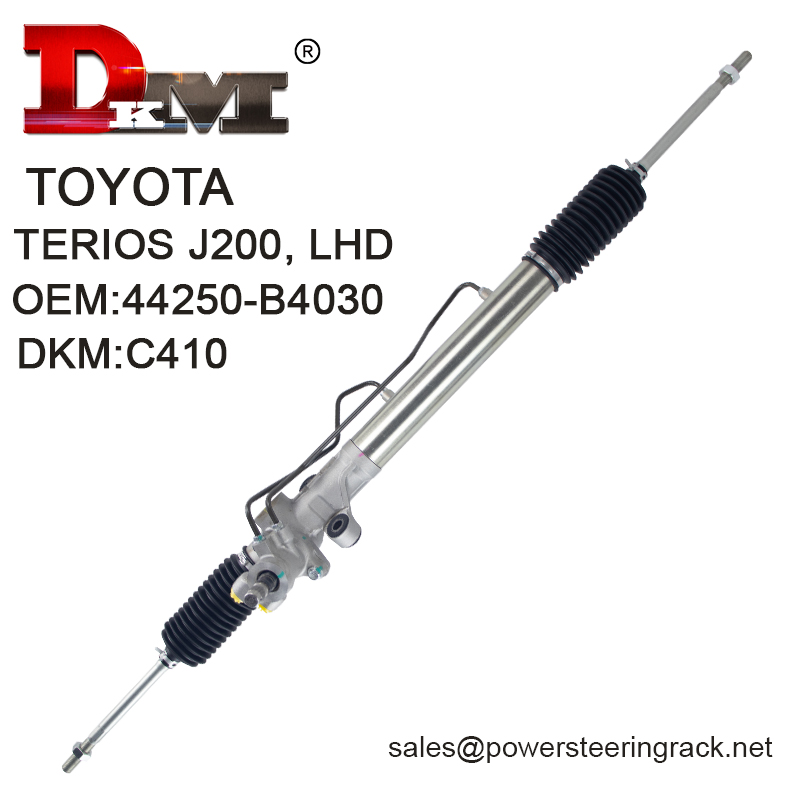
Analysis of Rack and Pinion Steering and Power Steering in Practical Applications
After understanding the basic concepts and differences between rack and pinion steering and power steering, we can further explore their performance in practical applications.
1. Mechanical rack and pinion steering
Mechanical rack and pinion steering systems are commonly used in older vehicles and some sports vehicles. This system is simple, responsive and lightweight, so it is considered an ideal steering choice, especially when greater steering precision and road feedback are required.
However, the disadvantage of mechanical rack and pinion steering systems is that it requires the driver to apply greater steering force, especially when driving at low speeds. For some people, this direct steering feedback is a pleasure, but for most ordinary drivers, it can be a burden.
2. Hydraulic power steering vs. electric power steering
Hydraulic power steering systems have always been the mainstream choice in the automotive industry. It uses hydraulic pressure generated by a hydraulic pump to help drivers steer easily. However, there is a certain amount of energy loss in hydraulic power steering systems because the hydraulic pump needs to run continuously, consuming engine power.
In contrast, electric power steering systems (EPS) are gradually replacing hydraulic systems due to their high efficiency and flexibility. EPS does not consume energy when it is not needed, so it is more energy-efficient. In addition, EPS systems can also be combined with electronic control systems to achieve more intelligent steering assistance.
3. Rack and pinion combined with power steering
In modern vehicles, rack and pinion steering is often used in combination with power steering systems. This combination retains the directness and precision of rack and pinion steering while reducing the driver's operating burden through the power steering system. This integrated system provides both precise control and driving comfort.
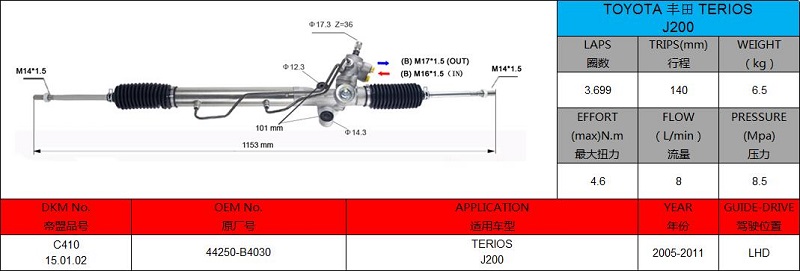
In summary, rack and pinion steering and power steering are not the same concept. Rack and pinion steering is a specific mechanical structure responsible for converting the rotation of the steering wheel into the steering of the wheels; while power steering is an auxiliary system designed to reduce the amount of effort required by the driver during steering.
In practical applications, rack and pinion steering can be used alone or in combination with a power steering system. Modern cars often combine the two to provide a better driving experience. Therefore, although they are different in nature, they can work together to create a more efficient and comfortable steering system.

